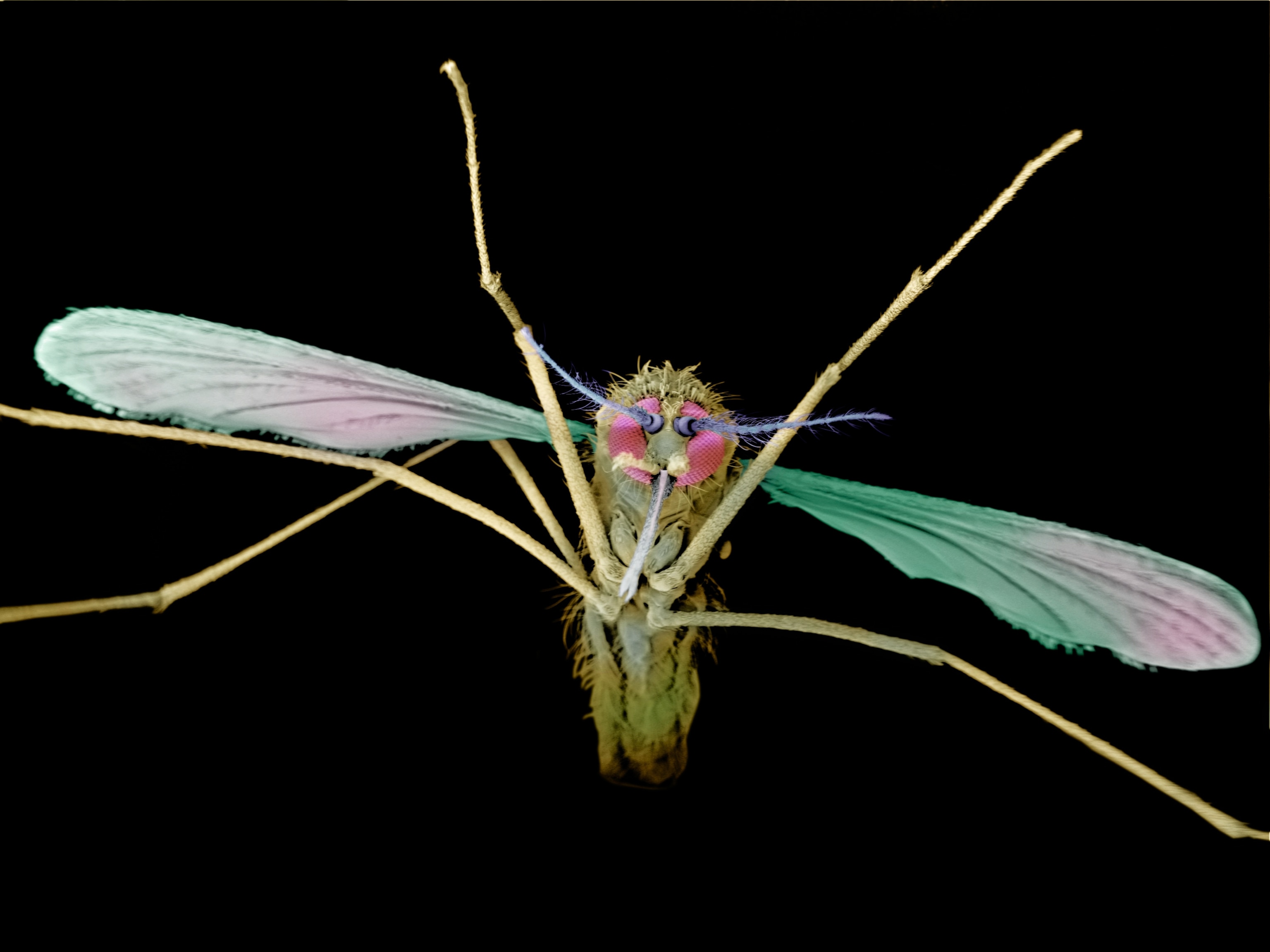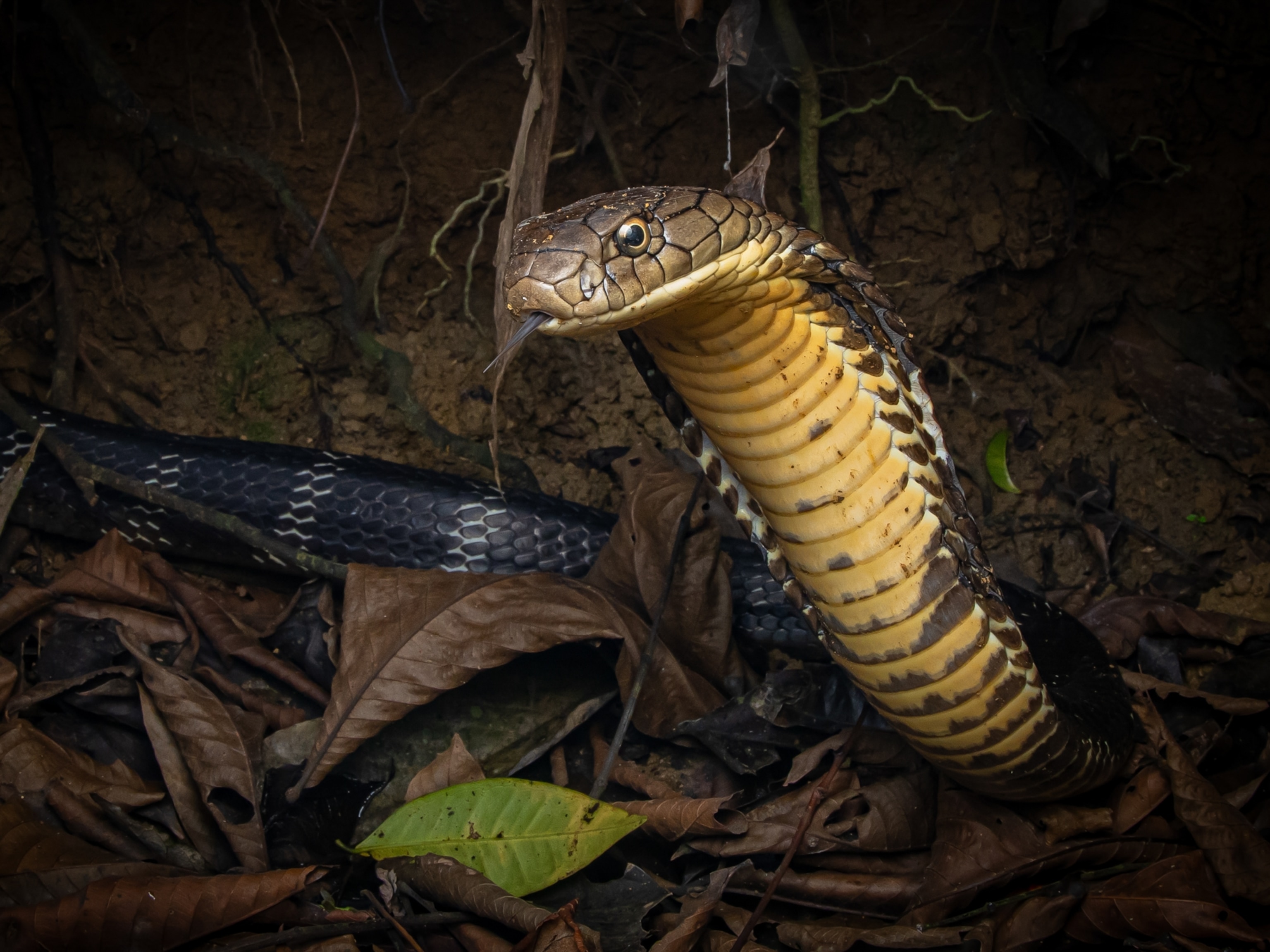
Snake Kills Bigger Snakes With World's Most Powerful Squeeze
No one knew how the king snake could take on snakes larger than itself—until now.
In the eat-or-be-eaten world of the animal kingdom, predators usually target smaller, and thus easier, prey. When a predator does go after a bigger meal—like a lion taking down a wildebeest—it will use a different means of attack or defense.
But king snakes, constrictors native to North America, "just don't seem to be abiding by that rule," says David Penning, a biologist at Missouri Southern State University.
That's because these reptiles can kill and devour other snakes up to 20 percent larger in size—including other constrictors, such as rat snakes. (Watch Superdeadly Snake Swallow Another Snake Whole.)
"When we pair a small king snake with a larger rat snake, they don't avoid it," Penning says.
"They actively and directly will attack a larger individual. That's not normally what's expected across basically all of animal diversity."
Now scientists have figured out how king snakes can accomplish this unusual feat.
Snake vs. Snake
For the new study, Penning and Brad Moon, a biologist at the University of Louisiana at Lafayette, examined dozens of live and dead specimens of various kingsnake and rat snake species native to North America.
King snakes and rat snakes often fight in the wild, a striking scene Penning describes as "two balls of muscle, wrapped up together like two knotted pieces of spaghetti." (Watch First-Ever Video of Python Swallowing Hyena.)
But the king snake doesn't simply out-muscle its foe: After analyzing 36 dead specimens, the researchers discovered king snakes and rat snakes of the same age have similar muscle mass.
It isn't that the rat snake is too weak to escape, either. The researchers stretched out 98 live snakes, strapped them down, and measured how strongly they pulled back. All the snakes pulled with the same force, according to the study, published this week in the Journal of Experimental Biology.
A True King
The surprise came when the scientists measured constriction strength.
They placed pressure sensors consisting of water-filled bulbs inside commercially bought dead mice, which they then fed to 182 snakes, wiggling the rodents to make them appear live. The snakes wrapped themselves around the pressure-sensing mice and squeezed.
With size being equal, king snakes exerted twice as much pressure as rat snakes. (See National Geographic's snake pictures.)

Compared with previous measurements of other snakes, such as pythons, the data so far suggests king snakes are, pound for pound, the strongest constrictors in the world, Penning says.
On average, king snakes squeeze with a pressure of 180 mm Hg, higher than the upper range of healthy blood pressure in a human, which is 120 mm Hg.
"That means if you were to encounter the pressures these king snakes exert, your heart would fail to pump blood—that's how strong this is," Penning says.
Reptiles on the Menu
Disrupting the heart and its blood flow is how scientists think constrictors kill prey, which replaces an older theory that they suffocated their victims.
Cold-blooded animals such as reptiles, which make up more than a quarter of the king snake's diet, don't need as much oxygen flowing in their veins as warm-blooded mammals, allowing them to withstand constricting pressures longer, Penning says.
The need to kill reptiles, then, may have triggered the king snake to evolve its stronger squeeze. Its grip also comes with a superior technique: Its coil forms a tight spool, while the rat snake's grip is more of a loose knot.
However, the scientists shouldn't completely discount muscle performance in the king snake's abilities, notes Anthony Herrel, a biologist at the Natural History Museum in Paris, France, in an email. (See "Pictures: How a Python Can Swallow a Crocodile.")
For instance, even though the study species had similar muscle mass, how individual muscles perform in both types of snakes may vary, Herrel says.
"The paper clearly documents behavioral differences, and future studies on muscle physiology may be especially insightful."
Penning and colleagues are already probing more into king snake muscles—perhaps finding more secrets behind what makes it king.
Follow Marcus Woo on Twitter.





